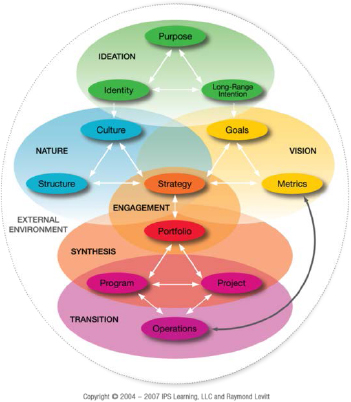
By Linky van der Merwe
Innovation can mean different things, like a change made to an existing product, idea, or field. It can also be described as the process of translating an idea or invention into a product or service that creates value and for which customers will pay. Being innovative does not only mean inventing. Innovation can mean changing your business model and adapting to changes in your environment to deliver better products or services. Take the project from Google, for example, which delivered Google translator that translates to 100 different languages.
In this article we look at certain traits that innovative people seem to share, how projects are used for innovation, how to measure the outcomes and lastly some examples of innovative projects.
Traits of Innovative People
According to an article in Fast Company, “7 Habits of Innovative Thinkers”, emotional intelligence plays a big role in innovative thinking. People can all become more innovative and creative by developing the traits that innovative people share. Harvey Deutschendorf explains that some of the emotional intelligence-related attributes that innovative people share, are as follows.
- Emotional intelligent people have their egos under control and are open to other people’s ideas. They don’t think their ideas are always the best. As a result of their openness to other ideas, they are able to accumulate a larger source of data from which to draw from.
- They are confident, not arrogant and they see failures as temporary setbacks.
- They are continually curious about people, concepts, and issues. They’re open to new information always on the lookout for new ideas that can be put into practice. Being avid readers, forever seeking out new ideas, and expanding their knowledge base increases their repertoire of tools for future use
- They are good listeners who are adept at processing information that makes them excellent listeners. When someone is speaking, most people are formulating a response in their minds instead of just focusing upon what the person talking is saying. Good listeners are able to focus not only on the words that are being spoken, but are aware of the tone of the words, the body language expressed, and the emotions behind them.
- They don’t let their emotions affect their innovation efforts. They don’t have to defend an idea that is proven to be wrong as they’re seeking to advance themselves personally and are looking to advance their ideas.
- They can take direction and are able to give direction.
- They show empathy towards co-workers and customers.
Now we understand how important the right character traits are for people to come up with innovative ideas. Let’s have a look at how projects can help with innovation.
Project as a Vehicle for Innovation
Projects are good vehicles for innovation as they can be used to solve real-life problems, bring new possibilities (creativity of entertainment at home), bring together subject matter experts through innovation hubs, or to help with goals towards sustainable development. Innovation is a collaborative process; where people in many fields contribute to the implementation of new ideas. This occurs most often through the execution of a project.
Measure of Success
Since projects are so important for implementing innovation ideas, we must consider how to measure whether the outcome of an innovation project was successful and if it was, how do we determine that.
Dr Harold Kerzner’s offers a helpful explanation of how to define success on innovation projects in his White Paper: “Defining Project Management Success with application to Innovation Project Management Practices”. According to Dr Kerzner:
- There is no single approach for defining innovation project success or success on any other type of project. There must be multiple measures using the right timing.
- Projects can appear to be successful once the deliverables or outcomes are completed, but real success may occur later when the desired business value is achieved over the longer term.
- He acknowledges that effective project management practices are contributors to success and therefore must undergo continuous improvements.
Real world examples of Innovation Projects
In the 1990’s after a drop in sales, Lego changed their strategy to focus on the consumer by linking both business and creativity. In order to innovate new Lego sets, LEGO started “Lego Ideas”, an initiative based on a co-create open innovation model. In this online website, LEGO consumers can design their own LEGO sets either using LEGO bricks or computer 3D applications. Users then discuss the idea and vote for it, once the idea reaches a targeted vote, LEGO can consider it as a new product with giving a small part of the revenues to the creator of the set. This model contributes putting the consumer in the heart of the innovation process and help the team to target sets that can achieve success based on the LEGO Ideas votes and comments.
Coke followed a similar open innovation model through a product called ‘Freestyle dispenser machine’. It allows users to mix their own flavors and suggest a new flavor for Coca-Cola products. The new product records the consumer flavor so they can get it from other Freestyle machines using the Coca-Cola mobile application. With the open innovation model putting the consumers in the heart of the production process, the company uses the suggested flavors as part the external ideas that can be evaluated and processed as a new product line.
Managing Innovation Projects
There is no doubt that project managers need to create environments where innovative new ideas are created and implemented. Also visit this video explaining what will enable innovation through projects.
To create the context that is conducive for innovation, we need to understand traits that innovative people share and how to define success and measure the outcomes of innovation projects. This will help to differentiate you as a project manager who can take on that strategic innovation project that your company wants to embark on.









































